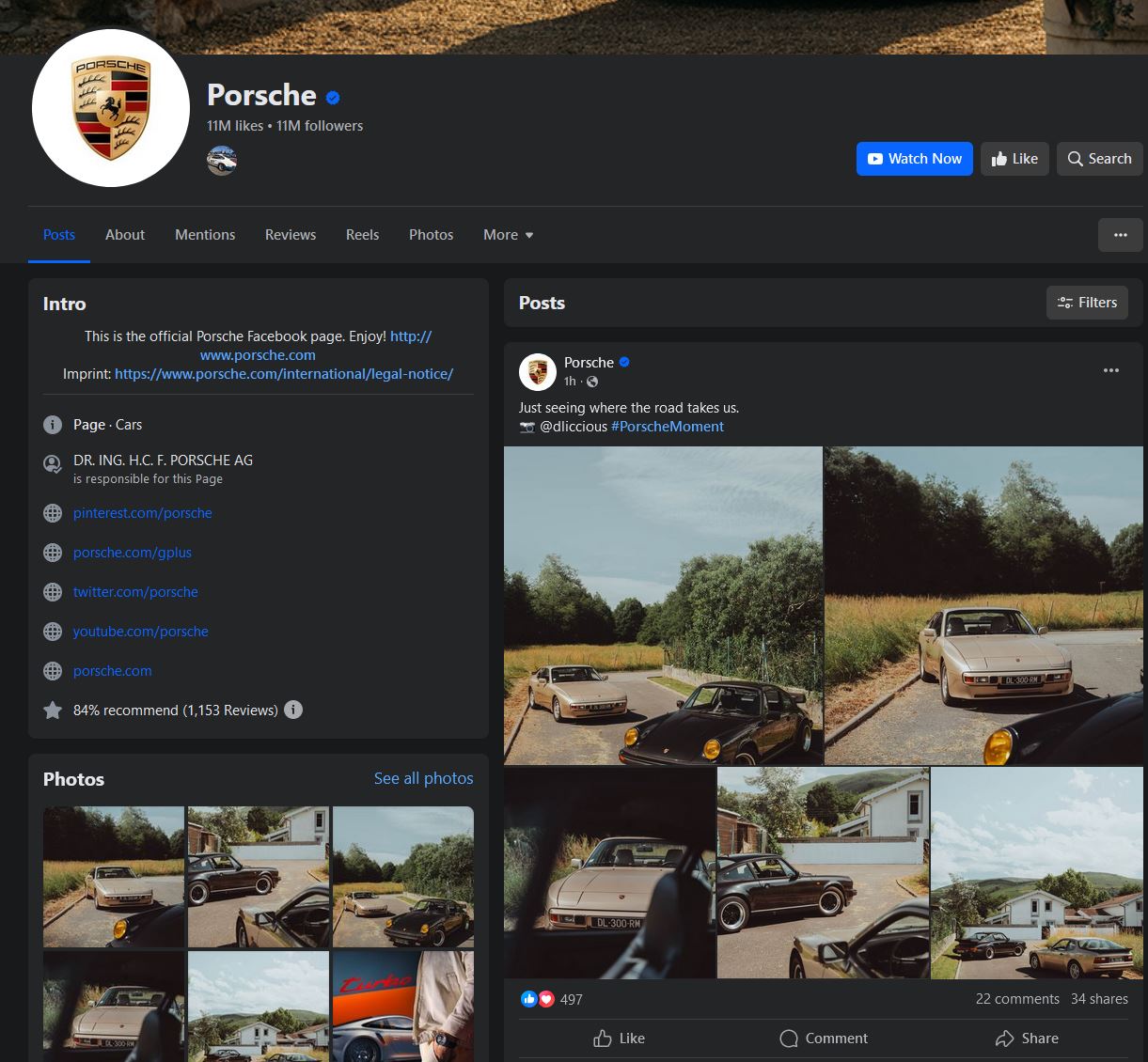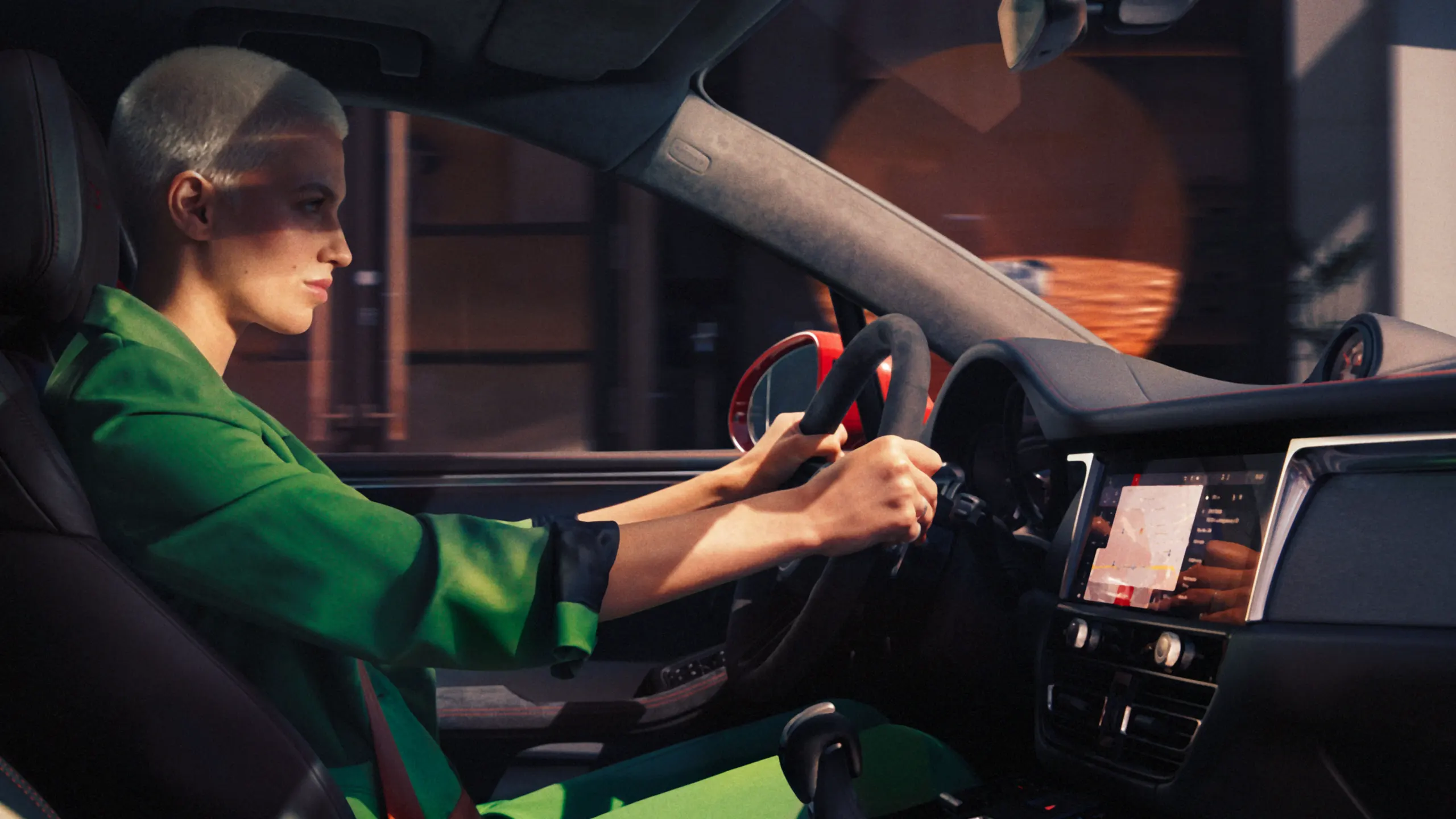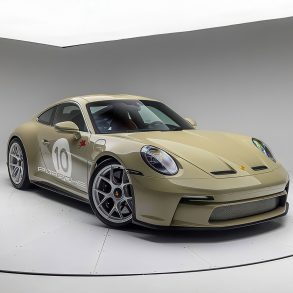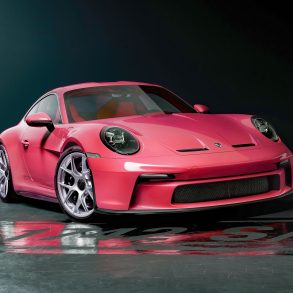If Porsche is anything, they are expert marketers. Think about it, they have not put out a dedicated ad for their cars in nearly 15 years. We’re talking about no TV commercials, no full page ad in the newspaper, no double page splash in a magazine… nothing. Yet, they are increasing their sales year over year, are one of the main leaders of sport EVs, and don’t show any signs of slowing down.

In fact, the only place that you can find any kind of advertising for Porsche cars is, of all places, the internet. Even then, they usually only make short films about their special edition cars, not bothering to advertise for the standard 911 or 718. But why is that?
That is the question we’re going to investigate today.
Shifts In Marketing Strategies
Probably the biggest change in every market since the early 1990s has been the rise and adoption of the internet. For the first few years, the internet was almost the new Wild West, with everyone able to make a website and post it online. Some big companies started to put their websites up, such as Microsoft and Apple, and many businesses caught on that the internet was the place to be. Such was the internet bubble of the late 1990s.
However, almost every automobile manufacturer at the time was still advertising primarily through “traditional” media. TV commercials, newspaper ads, magazine ads, even radio commercials were still the biggest draw to get people into dealerships. The internet at the time was still growing, and didn’t have any central video site, and social media wasn’t even a concept when the year 2000 came around.
Video Marketing
It was around this time that the last Porsche TV commercials were being shown on German TV, advertising the brand new 996 911 Carrera and Carrera S. Some were extremely cheeky and very in tune with the times, such as the commercial linked below. Others were epic mini-films about a minute long. They were all very well made, but Stuttgart realized that they weren’t being as effective as they had hoped.
This was when Porsche started to change strategies, and they haven’t looked back since.
It was around the start of 2005 that a little website called YouTube was released onto the web, and almost immediately, it shot up through the rankings to become the second most visited site of that entire year behind Google Search. It completely eclipsed traditional TV sets and networks in its reach, and many companies flocked to it to put up advertisements on their own channels.
It was back then that Porsche put out an 8 minute and 30 second mini-film about the all new Porsche Cayenne GTS called “Monaco.” Instead of being limited to 30 to 60 seconds for a TV advertisement, this allowed for a full review of all the specs of the Cayenne GTS to be discovered while also showing the trip a typical Porsche owner in Europe might take. Oddly, even to this day in September 2024, it only has 62K views.
It was the first video on their channel, and it set the precedent for the next 16 years of Porsche.
Social Media
Around the same time as YouTube, another website called TheFacebook was launched. After a few months, it changed its name to Facebook, and over the next two years became not just a social network, but the social network. Businesses flocked to the site, with over 100,000 business pages online by the end of 2007. As you might have guessed, Porsche was among those 100,000.
It might interest you to know that despite the market crash of 2008, Stuttgart realized that they not only had an audience on social media, but a captive and receptive one. It was a marketing department’s ultimate dream: Hundreds of thousands of people that have a registered interest in your product so much that they joined the official group on a platform. These were people that were just waiting to hear about the next great car to come from Stuttgart. So, it should come as no surprise that 2009 saw a gigantic jump in sales of Porsches.

If you look at their sales numbers ever since, every single year from 2010 onwards has been a net positive. They haven’t slid backwards at all, not even during the global pandemic. While other companies were still advertising across almost all media platforms, Stuttgart chose to remain where they knew they had an audience: Online.
They did this because because of one of the most powerful forms of advertisement that no company can ever buy, but is invaluable to their bottom line. By putting their advertising and directed marketing online on platforms where people could post comments and share links, they gained immense amounts of “Word of mouth” advertising. If they put up a new mini-film, say about the 918 Spider doing a lap of the Nurburgring (linked below), within hours of it going live there would be posts on Facebook going “Hey, have you seen this new Porsche video?”
You can’t buy that level of exposure, and that shows the true genius of Stuttgart’s shift in marketing: Direct to the people that are the most interested in it, and let them do the distribution and “hyping it up.”
Modern Trends Creating The New Porsche Marketing Landscape
For most of the 2010s, if you wanted to buy a car, you still had to do the dealership dance. Go to one dealership, get a quote. Go to another, get a quote. Compare the pricing and incentives. Choose some options you might have not thought of the first go around. Repeat ad nauseam until you sign the paperwork and drive off in your new car.
Yet, as Porsche was moving towards releasing their first EV, the Taycan, they noticed that one car company was selling their vehicles almost exclusively online. Their EV competitor, Tesla, quite literally has no showrooms. There are no dealerships you can go to. Even at their headquarters in Texas, there are no cars on display. Yet they are selling millions of cars every year.

We’re not saying that a lot of automakers are stupid, not at all. The thing is that the dealership model has been so ingrained into the selling process for so long that it’s difficult to effect change. Some companies are making the effort, by letting you spec out your perfect car online and then sending that spec sheet to the nearest dealership to you, but very few are making the shift towards online-only sales.
This is where Porsche’s new strategy comes in, their new Porsche “4 P’s” campaign: Product, Price, Promotion, Place. Put simply, they doubled down on market segmentation, refining their approach depending on metrics such as demographics, geographic, even psychographic tendencies. They look at age, income, education, gender, social class, and about 40 other small details, and then place a targeted ad online where they know that the audience will see it. This was demonstrated perfectly when the Macan was introduced in 2014.
The Cayenne was seen as the big super-SUV, the first of its kind that now has supercar makers the world over making their own versions. However, because the Cayenne is now seen as part of that super-SUV class, a vehicle more focused on speed than the actual experience, a lot of potential buyers in one specific demographic lost interest in it, that being 20 to 30 year old females in professional roles in the workspace. So what did Porsche do?

They made a smaller version that is just the right size to be “big,” but also directed a cubic ton of marketing through social media and their YouTube channel towards showing the Macan driven by younger women. All of a sudden, the Macan became the CUV for young female professionals, more than any other brand could ever hope to achieve. Just take a look at this video from Porsche’s YouTube channel from right after the Macan EV was announced… what do you notice about the targeted client?
Almost every single advertisement about the style, driving experience, and ownership experience is oriented towards women. However, all of the technical videos, the “Why we made it EV and how we make it” behind the scenes style videos are predominantly oriented towards men. Some might see that as being sexist, but in the purest analysis of marketing, it’s not. It shows an innate understanding of treating potential female owners with just as much value as male customers, sometimes more so, and orienting two different sides of their marketing to each group.
This is what is meant by the “4 P’s” approach: Marketing targeted directly to a potential owner, based on data that shows which demographic has the most vested interest in the product. No widespread advertising in the hopes of getting a client or two, just focused delivery based on the facts they know. It has worked far better than they could have expected.
Quite literally gone are the days of walking into a dealership “just to look around,” and here, now, are the days of “I am here to get this car so let’s get down to making a deal.” Without losing the dealership experience, Porsche has revolutionized that very same experience so that more customers that come through dealership doors already know exactly what they want.
It’s streamlined. It’s efficient. It is very, very German.
Looking To The Future
While the new Porsche marketing strategy is making both millennials and Gen Z customers feel seen and appreciated, the true test of the marketing from Stuttgart is still on the horizon. It will come when Generation Alpha (aka Gen Alpha), those born 2010 or later, come of age and have disposable income to spend on a nice German sports car. There is a huge generational jump from Gen Z, those born 1996 to 2009, in that the Z’s were the last to experience the world before connectivity and the internet was the only thing that mattered.
Gen Alpha are those that are always online, even if not actively so. These are the kids that have full blown smartphones in Junior High, the ones that question why traditional TV networks still exist when there are streaming platforms available, and those that think that anything offline or not interactive is “old tech.” Okay, we may be generalizing the group quite a lot, but when you look at it objectively, Gen Alpha has never really been truly unplugged and “analog.”

The truth of it is that Porsche will have to rethink their marketing all over again. Gen Alpha are very visual, very interactive, and prioritize authenticity and diversity. They also have a specific attention span and really have no time for the typical marketing claims that are little white lies that some companies still try to push out the door, like “This car is a Porsche-beater” when it’s something like a Honda Civic. The Civic Type-R can keep up with a 718 Cayman, and is an absolutely stellar car for what it is, but it’s still not a Porsche. That is the defining challenge of the next generation: How to sell them on the fact that a Porsche is “better,” in quotes because subjective opinions matter just as much as objective ones in marketing.

To be fair, there are many in Gen Alpha that do realize there is a world that exists offline, and Porsche will have to market to them too. However, the largest, probably most important area that Stuttgart will need to target is where Gen Alpha lives, that being the interactive space. This is a notoriously difficult area to penetrate with marketing, as these areas have a bad reputation for “gacha” advertisements, apps, and games. Those apps and games are designed to make you spend money gambling within said app or game in the hopes of getting a powerful character or item, and more often than not, sours the experience for a lot of players.
Some companies, however, have skillfully navigated this balance, with a perfect example of just how impactful that kind of marketing can be demonstrated by Nike in 2019.

There is a very popular, free-to-play online game out there called Fortnite. It is kid-friendly, so a lot of 11 to 13 year olds in 2019 were playing it, and in May 2019, a new “Hang Time Bundle” was put onto the game’s store. It featured Nike outfits, Nike colors, and most importantly, a pair of Nike Air Jordan 1’s that any of your characters could wear. You could buy it with real money, or use your in-game currency to buy the pack.
That there was the key to how it was so successful. You could have the immediate satisfaction of paying something around $15 to buy the pack and equip it right away, but you could also “grind” for in-game currency and buy it that way. Either way, you got the pack to customize your character to with a Nike look. The net result for Epic Games, the makers of Fortnite, was several millions of dollars through their game store, as well as a ton of word of mouth advertising to get those who hadn’t tried Fortnite to “buy-in” on the free-to-play game.
For Nike, the net result outside of the game space was that sales of Nike shoes and sportswear shot up in May, June, and July of 2019, well over 15% year to year. All because Nike products were in a place that a lot of Gen Alpha was exposed to them, and in a way that didn’t force the player to use real money to get the items from the marketing pack for their characters.
In fact, the Fortnite x Nike promotion was so impactful and so successful that it is still taught, dissected, and examined in business marketing classes today. It was immediately engaging, placed smack-dab in the lap of the target audience, and most importantly didn’t force anything down the throat of any player… basically a how-to manual of how to market to Generation Alpha.
So who knows, you might suddenly see a 911 cruising through the fields of your favorite online game with millions of players, or have a downloadable interactive experience show up on a smartphone app store. We think that this is more likely than not, because if Porsche is one thing apart from a great automaker, it is that they know precisely how to market their products, and have been adapting how they do so for decades.
Only time will tell, but we’re excited to see how things turn out.











